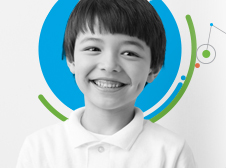4 Tips for Learning Facial Expressions
Amber Brandt
Amber Brandt
Articles by Amber
-
Five Important Conversations to Kick Off a New School Year
Published: Jun 25, 2024
-
4 Ways to Combat the Summer (Learning) Slide
Published: Jun 11, 2024
-
First Day of School: Tips for a Smooth Start
Published: May 09, 2024
-
Healthy and Warm Food Ideas for Cold Days
Published: Mar 19, 2024
While navigating the pandemic required large adjustments to the way we interact, many studies have been conducted on one specific effect of mask-wearing – a delay in babies under 2 learning how to smile or coo. According to expert Dr. Tushar Shah many of the children studied were “…not able to understand the facial gestures quickly and their social milestones are also getting delayed by an average of 2-3 months.” Not being able to see the faces and nonverbal expressions of the people around them caused a delay in being able to interpret or respond to the cues. But these babies aren’t the only ones struggling to interpret facial expressions or body language.
Many neurodivergent people or those on the autism spectrum have difficulty interpreting nonverbal cues from others, which can make it difficult to understand the full story of what someone is saying. For instance, if a person says they are “fine,” but their facial expression says otherwise, someone with Autism may simply accept what the person said without detecting a deeper emotion, missing out on the opportunity to provide more empathy or comfort.
But here are a few tools to help:
- Use pictures. One of the best ways to help someone learn to identify facial expressions is by studying what each emotion looks like. Gather photos of people you (or your child) know or look at pictures in a magazine, television, or online. Talk about how each expression is different and work on identifying which emotion a person appears to be feeling and why. Help your child consider any contextual clues and then practice mimicking the look yourselves.
- Drill down. Once you’ve considered a range of faces together, begin zeroing in on the specific features of each emotion. Talk about how eyebrows, mouths, eyes, or foreheads change with each feeling. Have them practice again in front of a mirror.
- Notice “neutral.” Once you’ve identified how a range of emotions can look, help your child identify what a “neutral” or “resting” face may look. When they can see the change happen from resting to emotion, it will be easier to identify a change in a person’s behavior.
- Teach them it’s okay to ask. It’s important for your child to understand that learning to read nonverbal cues and facial expressions is a process. They need to know it’s okay to ask for help if they’re feeling uncertain about someone else’s feelings. “Sometimes I can’t tell if you’re feeling angry? Are you?” “Your face seems very straight but it seemed like you were being funny. Is that correct?”
If you’d like to go a bit deeper and explore how to identify body language, check out this exhaustive article full of helpful images and tips.



